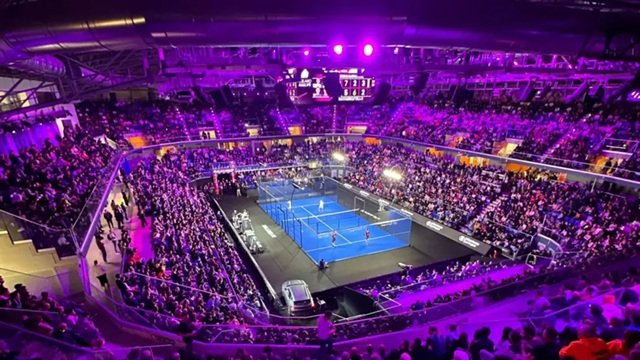Athletic competition has evolved into a sophisticated economic engine that supports players, teams, analysts, and countless professionals connected to performance-driven entertainment. Money flows through sponsorships, media contracts, merchandise, training programs, and strategic partnerships, creating opportunities for those who understand how athletic ecosystems operate. People who monitor financial models within sports often explore probability-based environments, and some readers choose to read more about interactive experiences to expand their understanding of risk-focused decision-making. This perspective helps many individuals appreciate the strategic mindset required to thrive in modern athletic industries.
How Professional Sports Generate Multi-Layered Income
Revenue within sports emerges from an intricate combination of commercial agreements, media rights, athlete endorsements, and fan-driven spending. Multiple organizations invest heavily in competition because large audiences support expansive marketing campaigns. Every match, tournament, and season creates new opportunities for sponsors, broadcasters, and athletes seeking exposure. These financial structures shape the stability of clubs and leagues across different regions.
Various performers rely on carefully negotiated contracts that reflect their market value. Strong performance often pushes compensation higher, while consistent branding elevates an athlete’s influence beyond competition. Support from global audiences strengthens this effect by increasing demand for sponsored content and event appearances. Many players build strong relationships with partners who appreciate long-term collaborations, helping them secure reliable financial foundations for their careers.
Primary Revenue Sources Supporting Sports
The most common income channels include:
- Commercial sponsorships tied to visibility
- Licensing deals connected to merchandise
- Broadcasting rights purchased by major media groups
- Ticket sales and event experiences
Each component works together to reinforce competitive environments and sustain long-term growth.
Why Branding Has Become a Core Income Driver
Public identity plays a vital role in determining how athletes expand their earnings. Unique voices, relatable stories, and distinctive styles help individuals build communities that follow them across platforms. These connections often lead to commercial opportunities that reward consistency, authenticity, and creative communication. Many professionals use their visibility to highlight training methods, personal values, or charitable causes that resonate strongly with global audiences.
Collaborations with companies become more accessible when performers display reliability and professionalism in public spaces. A compelling brand elevates an athlete beyond competitive achievements by emphasizing personality and lifestyle. This approach ensures relevance even during injuries or late-career transitions when performance may fluctuate. A strong public presence also builds a foundation for future ventures outside sports.
Key Components of Athlete Branding
Successful athlete branding often includes:
- Clear messaging that aligns with personal values
- A recognizable identity supported by consistent visuals
- Meaningful engagement with communities
- Storytelling that highlights human challenges and accomplishments
This strategy transforms visibility into long-term financial potential.
Athlete Entrepreneurship and Independent Wealth Creation
Many professionals pursue entrepreneurial ventures to secure financial independence. Competitive careers are limited by physical demands, making diversification essential for long-term stability. Investments, product lines, fitness technologies, and training academies represent popular choices for individuals looking to develop additional income streams. This approach allows athletes to build legacies that extend beyond competition.
Careful planning improves the likelihood of long-lasting success. Advisors help identify projects that align with personal interests, ensuring that investment decisions remain strategic. Media projects, consumer goods, and digital platforms often become profitable sources of revenue. These ventures empower athletes to maintain influence while gaining valuable business experience.
Popular Entrepreneurial Choices for Athletes
Commonly pursued paths include:
- Nutrition brands guided by performance research
- Online training programs focused on skill development
- Media companies offering original content
- Equity in technology startups
Each direction gives athletes more control over their financial future.
How Fans Engage With Sports-Related Earnings Opportunities
Audience participation has increased dramatically as technology enables deeper interaction with athletic ecosystems. Analytical communities, social commentary platforms, and predictive tools attract individuals who enjoy evaluating strategies and performance patterns. These environments help followers gain insights into competitive dynamics while forming networks with people who share similar interests. Engagement through various channels strengthens overall involvement.
Some followers create their own financial opportunities by building content platforms that analyze match trends or highlight coaching insights. Advertisers partner with these creators when their channels attract consistent viewership. This shift allows dedicated fans to turn their understanding of competitive environments into profitable ventures. As more people explore these possibilities, sports culture evolves into a multidimensional economic environment.
Ways Fans Participate in the Economic Side of Sports
Many supporters focus on:
- Tactical breakdowns and performance analysis
- Video channels offering commentary
- Community discussions centered on athlete development
- Predictive conversations connected to match outcomes
These activities establish deeper connections between fans and professional environments.
Conclusion
Earning opportunities tied to professional sports continue expanding, allowing athletes, creators, analysts, and dedicated fans to participate in powerful economic systems. Strong branding, strategic investments, entrepreneurial projects, and interactive engagement help individuals achieve sustainable financial growth. As these pathways become more accessible, the connection between money and athletic performance grows stronger, creating a dynamic environment filled with long-term potential for anyone willing to approach it with discipline.


